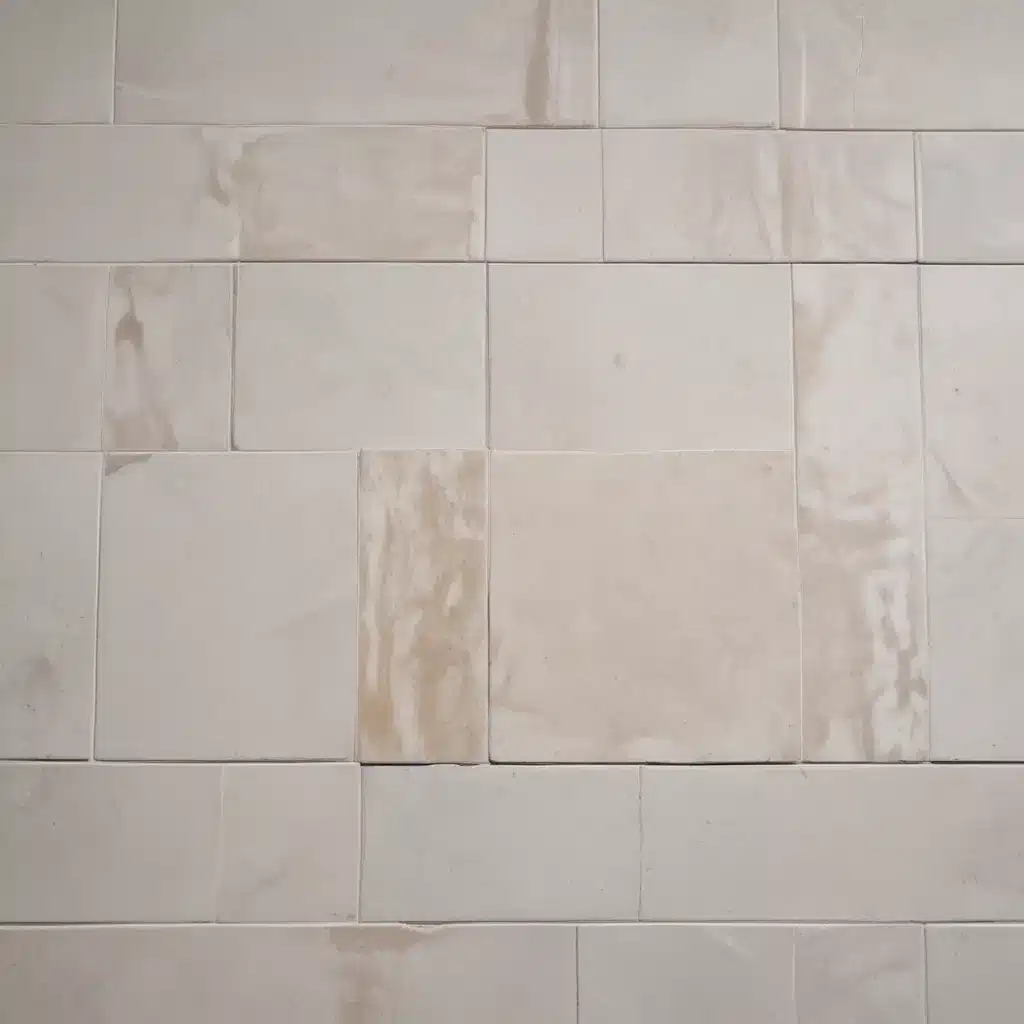The Grout Grime Struggle
I live in an old apartment with a bathroom floor made of ceramic tiles. While the tiles themselves have a certain rustic charm, the grout in between them is an absolute nightmare. That concrete-like substance seems to attract dirt and grime like a magnet, making it one of the most unpleasant things to clean in my entire home.
As someone who tries to clean as green and eco-friendly as possible, the struggle is even more real. Most commercial grout cleaners are packed to the brim with harsh, corrosive chemicals that I want nowhere near my home. And the go-to household alternatives like baking soda and vinegar? Well, let’s just say they didn’t have enough oomph to tackle my seriously grimy grout.
Just when I was about to give up and resign myself to a life of unsightly, discolored grout lines, I stumbled upon a game-changing solution: sodium percarbonate. Now, I know what you’re thinking – that sounds like some sort of scary, industrial chemical. But trust me, this stuff is a cleaning superhero in disguise.
The Power of Percarbonate
Sodium percarbonate is a white crystalline powder made from soda ash and hydrogen peroxide. When dissolved in water, it releases a powerful mixture of oxygen, water, and those trusty soda crystals. This makes it an absolute powerhouse when it comes to laundry and cleaning applications.
For starters, sodium percarbonate is an incredibly effective stain remover, gently lifting dirt and grime from both white and colored fabrics without fading or damaging the material. It also has a deodorizing action that can get bad smells out of your clothes, while the soda crystals help to soften the water and boost the efficiency of your regular laundry detergent.
But the real magic happens when you use sodium percarbonate to tackle those pesky grout stains. Unlike the harsh chemicals in commercial cleaners, this stuff is completely safe for you and the environment. In fact, the U.S. Environmental Protection Agency even had a hand in developing the formula, so you know it’s as green as it is effective.
Grout Cleaning Made Easy
When it comes to using sodium percarbonate to clean grout, the process couldn’t be simpler. Just mix a couple of tablespoons of the powder into a bowl of hot water, and you’ve got yourself a powerful, all-natural grout cleaning solution.
Simply apply the solution directly to the grout lines, let it sit for a few minutes, and then give it a good scrub with a stiff-bristled brush. The oxygen bubbles generated by the percarbonate will do most of the hard work, lifting away even the toughest stains and discoloration.
For extra stubborn areas, you can even make a paste with the sodium percarbonate and water, leave it to sit for 15 minutes, and then gently rub it into the grout before washing it away. Just be sure to do a spot test on an inconspicuous area first, just to make sure it won’t cause any damage to your tiles or grout.
Keeping Grout Clean for Good
Now, I know what you’re thinking – if I’ve finally found the holy grail of grout cleaning, why would I ever want to do it again? Well, my friends, that’s where grout sealers come in. These products are designed to create a protective barrier, preventing dirt and grime from penetrating the porous grout in the first place.
Now, I’ll admit, I was a bit skeptical of grout sealers at first. After all, most of them seem to be packed with just as many harsh chemicals as the commercial grout cleaners I was trying to avoid. But after doing some research, I discovered that there are actually some pretty great eco-friendly options out there.
Clean & Green Tile & Grout Cleaner, for example, uses a formula that was developed with the help of the U.S. Environmental Protection Agency, so you know it’s safe for both you and the planet. And HydrOxi Pro Grout is a hydrogen peroxide and orange oil-based solution that’s not only effective, but actually leaves your bathroom smelling fresh and clean.
By combining the power of sodium percarbonate for deep cleaning and an eco-friendly grout sealer for long-term protection, I’ve finally found the perfect one-two punch to keep my bathroom grout looking as good as new. No more scrubbing on my hands and knees, and no more harsh chemicals – just a clean, healthy, and beautiful bathroom that I can actually feel good about.
Cleaning with Confidence
Now, I know what you might be thinking – with all this talk about chemicals and safety, isn’t sodium percarbonate just as scary as the stuff I was trying to avoid in the first place? Well, let me put your mind at ease.
While it’s true that sodium percarbonate is a chemical compound, it’s actually a lot safer and more eco-friendly than traditional cleaning products. In fact, it’s not even considered a “chemical” in the same way that things like chlorine bleach or harsh detergents are. Instead, it’s made from naturally occurring minerals and breaks down into simple, non-toxic ingredients like oxygen and water.
Of course, that doesn’t mean you can go guzzling it down or rubbing it all over your skin. Like any cleaning product, it’s important to use sodium percarbonate with care and caution. Always make sure to work in a well-ventilated area, avoid getting it in your eyes, and wear gloves if you have sensitive skin.
But with a little common sense and these simple precautions, you can clean with confidence, knowing that you’re not exposing yourself or the environment to any nasty, harmful substances. And when it comes to that age-old battle against grout grime, sodium percarbonate is your secret weapon – a clean, green, and oh-so-powerful ally in the fight for a spotless bathroom.
So why not give it a try? Head over to Adam Cleaning and stock up on some sodium percarbonate today. Your grout will thank you, and so will the planet.







